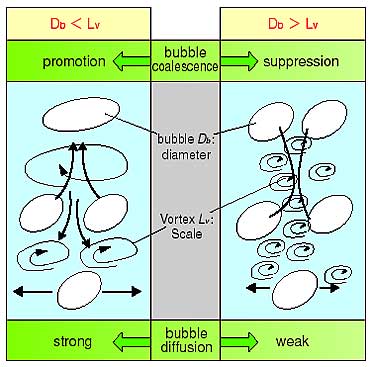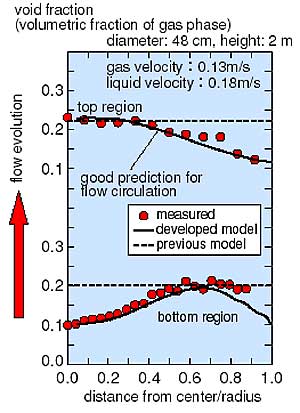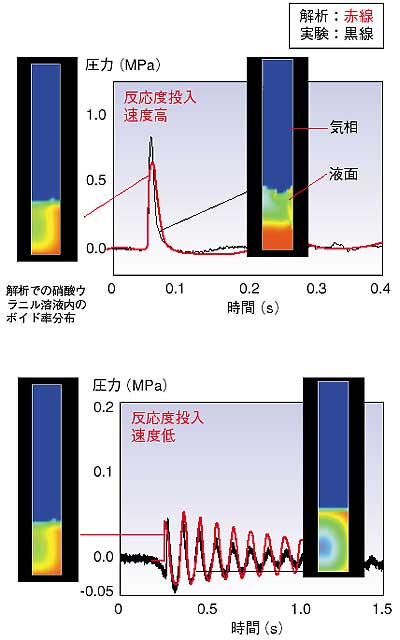For understanding
gas-liquid two-phase flow
in a large flow path,
a large volume like an
upper plenum above the
reactor core or a water
pool is indispensable
for the design and safety
evaluation of passive
safety systems. Previous
evaluation methods were
based on experimental
data from small-scale
flow paths, up to 5 cm
inner diameter. These
methods were unable to
predict the behavior well
in such a flow path or
volume. In this study,
experiments were conducted
with a large vertical
pipe, 20 cm inner diameter.
We discovered that the
effect of flow path scale
on void fraction distribution
can be explained by the
relative relationship
between the bubble diameter
(Db) and the vortex scale
in the liquid phase (Lv)
(Fig. 2-6). The model
developed based on this
finding was verified using
various databases (Inner
diameter: 1-48 cm, Pressure:0.1-5
MPa) and was confirmed
to predict the behavior
of two phase flow well
by the concept using the
relationship between Db
and Lv (Fig. 2-7).
The developed model was
incorporated into the
ACE-3D code (JAERI public
code) that can simulate
complex geometries by
either a porous-approximation
function or a boundary-fitting
coordinate function. The
ACE-3D code is now widely
used for various applications,
such as the design analysis
of a passive containment
cooling system (PCCS)
with a horizontal U-tube
type heat exchanger and
the analytical investigation
of pressure response due
to radiolytic gas in supercritical
experiments at TRACY (Fig.
2-8). Using the ACE-3D
code, we are reducing
the cost of experiments
by reducing the number
of experiments. We are
also obtaining more detailed
physical knowledge to
elucidate experimental
results. |


